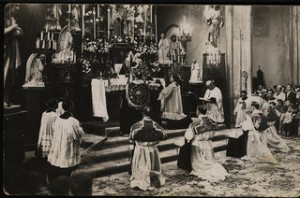History of Chile
Early History and People of Chile
Nestled between the South American west coast and the Andes Mountain Range, the fertile lands of Chile have been home to settlements and societies since as far back as 2,000BC.
In the north, various small tribes eked out a living among the oases, river valleys, and lush coastal areas of Chile’s northern deserts. The incredibly dry conditions led to some of the oldest and best-preserved remains in the world. This area was also influenced by the Inca Empire, which expanded southward from its seat in modern-day Peru.
In central Chile, various agricultural –based indigenous groups made their home. The most well-known and influential of these was the Mapuche. Here, the Inca expansion, which had been so influential in the North, met fierce resistance. The Mapuche People ultimately checked the Inca Empire’s expansion in 1460, and in 1491.
The region of Patagonia covers most of the southern tip of South America. In this region, the hunter-gatherer Tehuelche People made their home. Their nomadic lifestyle took them throughout Patagonia, spanning what is now Southern Chile and Argentina.
Spanish Conquest of Chile
The first European to set eyes on Chile was Magellan, when his search for a route to circumnavigate the world took him through Chile’s south. The region lacked the gold and mineral wealth of other parts of South America, though, and Spanish interest in Chile didn’t blossom until the early 1540s. A Spaniard named Pedro de Valdivia saw the agricultural potential of Chile’s central regions, and founded the city of Santiago. Despite local resistance, he founded various other cities and settlements throughout central Chile.
Spanish rule of Chile was always rocky and fraught with conflicts and resistance. In the North, Spanish rule was more stable, with the system of encomienda in effect. Under this system, indigenous people paid tribute and did manual labor for individual Spaniards.
In Central Chile and the South, though, the indigenous populations were not so easily subdued, and Spanish colonists found themselves in a frequently unsafe and unstable environment. The Mapuche people’s successful resistance of Spanish rule is, to this day, a source of pride for many Chileans. The Arauco war, in which the Mapuche fought against the Spanish colonists, lasted for nearly three centuries. Ultimately, it ended with a series of treaties with various Spanish governors.
Over the centuries, though, much of the indigenous population died out. Warfare, the hardships of forced labor, and epidemics were all to blame for the decrease in indigenous populations. The majority of Chileans were of mixed Spanish and indigenous heritage, known as Mestizos.
Modern Chile
Beginning in the early 1800s, independence movements and ideas of self-rule were circulating through all of South America. Chile was no exception. The support for Chilean independence was far from unanimous, though. As independence movements spread throughout the continent, Chile became embroiled in the conflict. Argentinian forces assisted Chile’s independence movement, and the conflict quickly rose to a civil war. Argentinian-backed nationalists faced off against loyalists to the Spanish crown.
Despite mixed support and Spanish re-conquests, Chile’s independence movement won a major battle, as well as the country’s formal independence, in 1818. Fighting continued in the south until 1826. Although Chile had effectively won its independence from Spanish colonial rule, it wasn’t until 1840 that their declaration of independence was formally recognized by Spain and diplomatic relations were opened.
Chilean self-rule got off to a rocky start. From their independence in the early 1800s until the mid 1900s, liberal and conservative elements of the government vied against one another for power. Presidencies and dictatorships rapidly rose and fell, against a backdrop of foreign wars and natural disasters.
A new era of Chilean politics began when, in 1970, a socialist regime was elected to power. Under President Salvador Allende, the state took over control of the economy, banking, and many enterprises. Allende also initiated land reform programs and redistribution of wealth and wages throughout the country.
These policies led to out of control inflation, food shortages, and numerous other problems. Allende’s socialist policies and close ties with the USSR and the KGB put a strain on Chile’s relationship with the US, as well. CIA involvement further destabilized Allende’s government and Chile’s economy. Although Allende’s presidency was short-lived, it paved the way for the 1973 coup (with alleged CIA support) that replaced Allende with General Augusto Pinochet.
During the nearly two decades that Pinochet was in power, his brutal regime cracked down on human rights. Tens of thousands of Chileans were executed, imprisoned, tortured, or driven into exile. Despite the brutality of his rule, Pinochet’s government did halt the out of control inflation that had occurred under Allende, as well as increasing Chile’s GDP. Although Pinochet stepped down in 1990 after a vote denied him a second term, he remained as Army Chief of Staff until retiring in 1998.
When Pinochet stepped down from the presidency in 1990, it ushered in a new era of democracy for Chile. Since then, a string of democratically elected presidents have come to power, and have peacefully stepped down at the end of their terms. Reforms have increased the stability of the democratic system in Chile, and free trade agreements have opened up trade with many countries around the world.
For most of the past two decades, Chile’s presidents have belonged to coalition of political parties called the Concertación. However, in 2010, Chile elected former senator and billionaire Sebastián Piñera, taking the country’s politics in a new direction.
Go back to our Chile Country Guide page.



